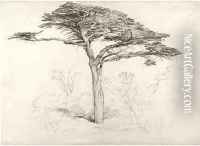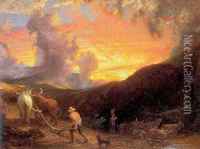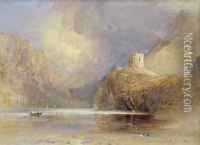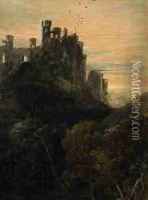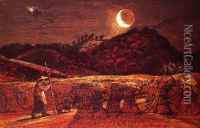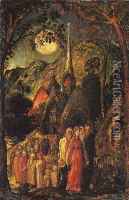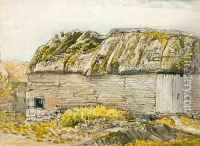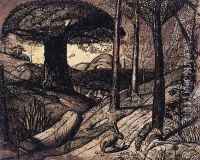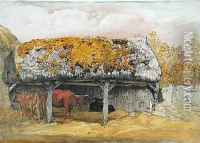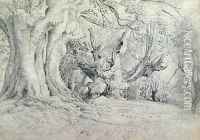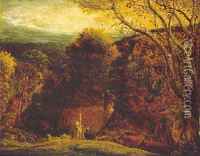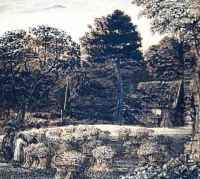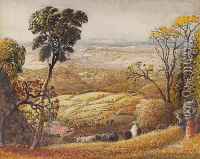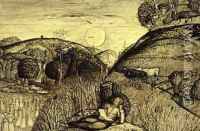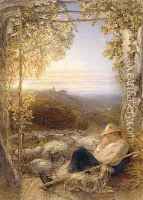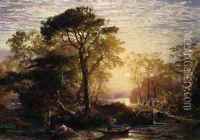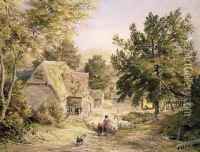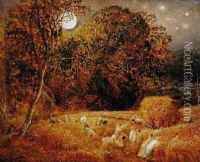Samuel Palmer Paintings
Samuel Palmer was an English landscape painter, etcher, and printmaker. He was also a key figure in the Romantic movement in Britain and is best known for his visionary pastoral paintings. Born in London on January 27, 1805, Palmer showed an early talent for art and was largely self-taught, although he did receive some guidance from the artist John Linnell, who introduced him to William Blake. Blake's work and mystical approach to art deeply influenced Palmer, leading him to develop a unique style characterized by rich colour, detailed landscapes, and often, spiritual overtones. In 1826, Palmer moved to the village of Shoreham in Kent, which marked the beginning of his most productive and inspired period, often referred to as his 'Shoreham Period'. During this time, he created deeply imaginative works, focusing on the beauty of the English countryside and often imbuing it with a sense of the divine. Palmer was a founding member of the Ancients, a group of like-minded artists who shared a disdain for modern industrial society and a preference for a more spiritual and pastoral vision of England. Despite his early success, Palmer's work fell out of public favor in the later years of his life. He struggled financially and was largely forgotten by the art world at the time of his death in Redhill, Surrey, on May 24, 1881. However, the 20th century saw a revival of interest in his work, and he is now celebrated as one of the most important figures in British Romantic art. Palmer's legacy is preserved through his influence on the Arts and Crafts Movement and his contribution to the revival of interest in printmaking in Britain.
